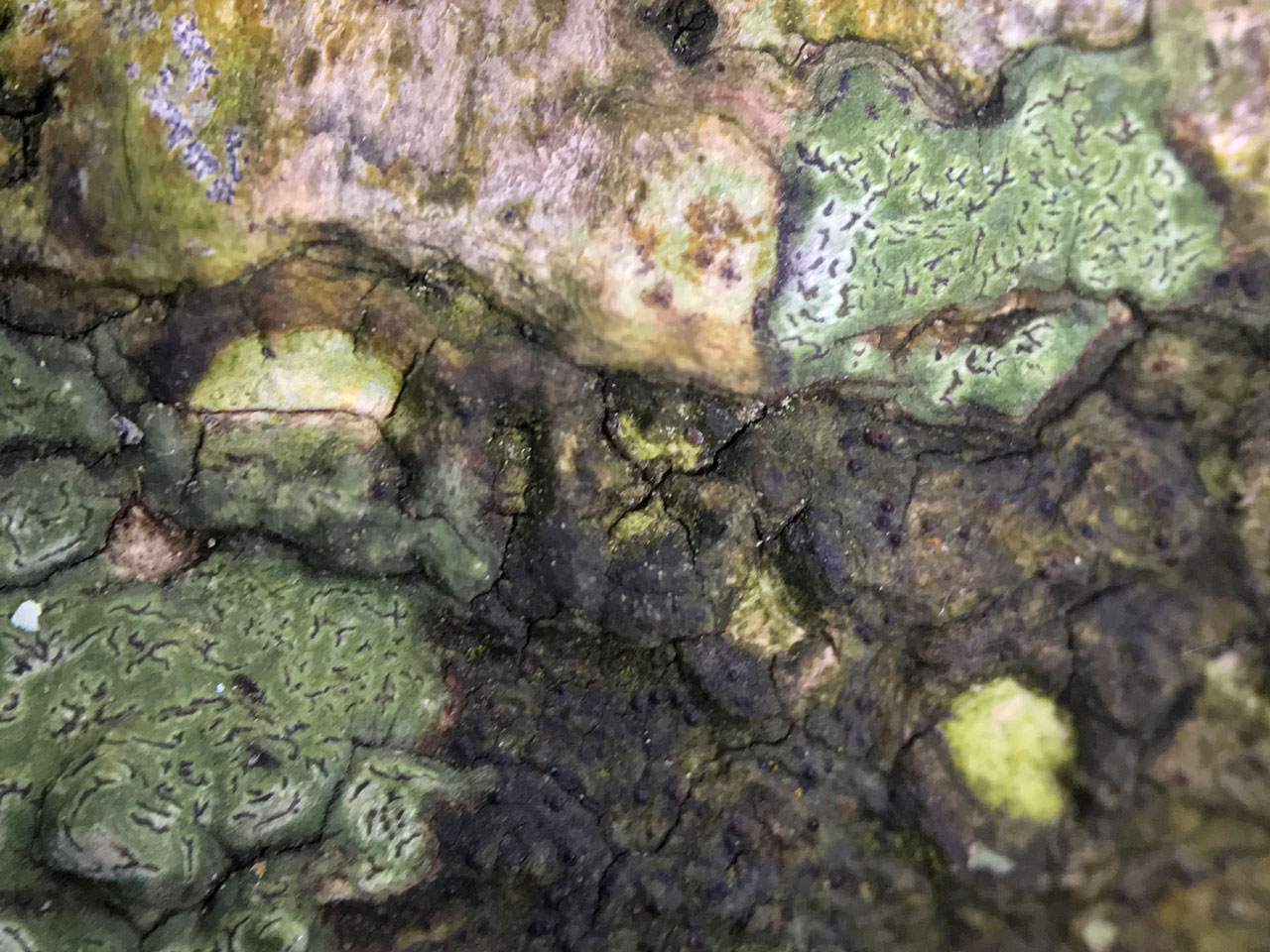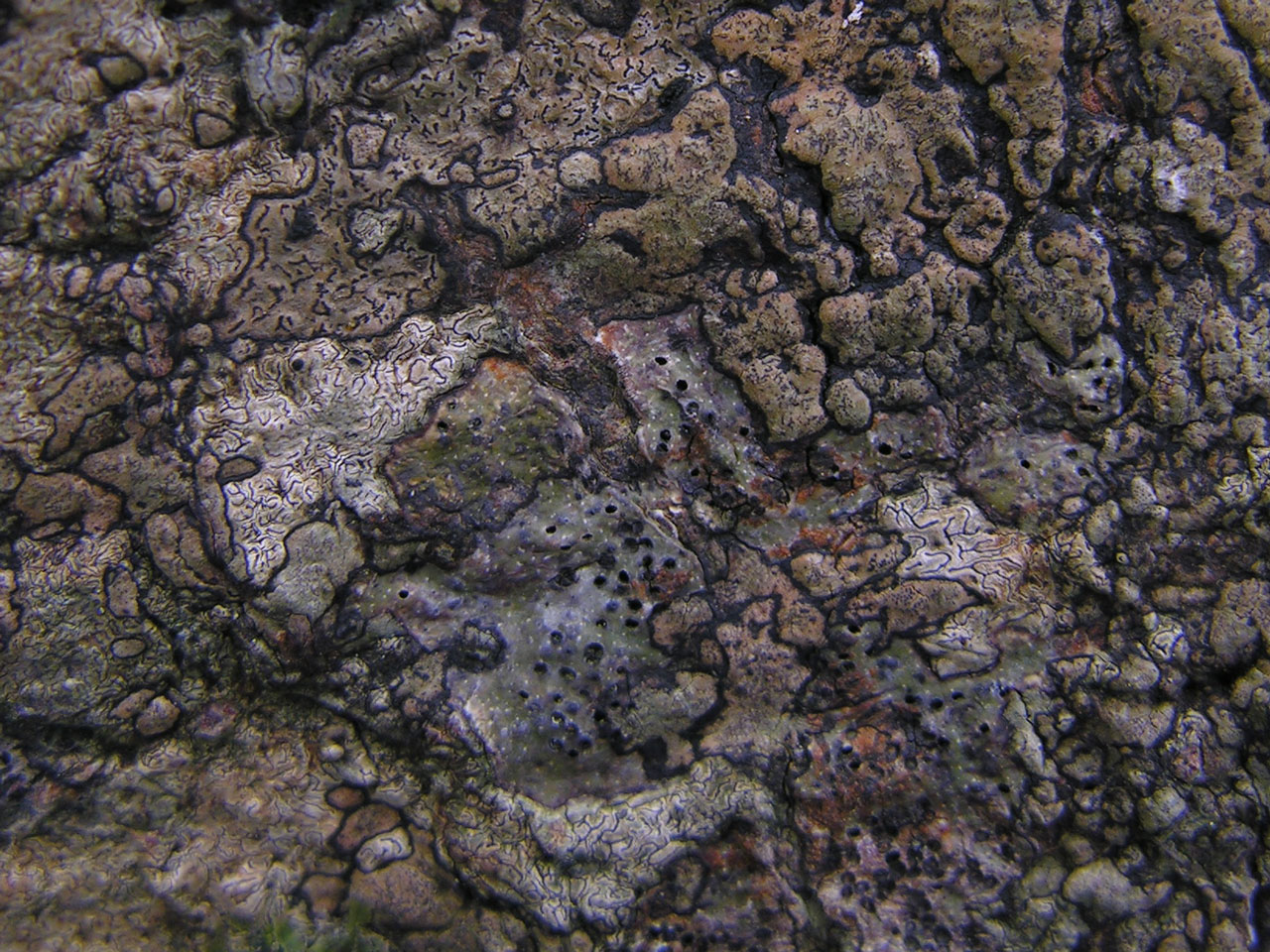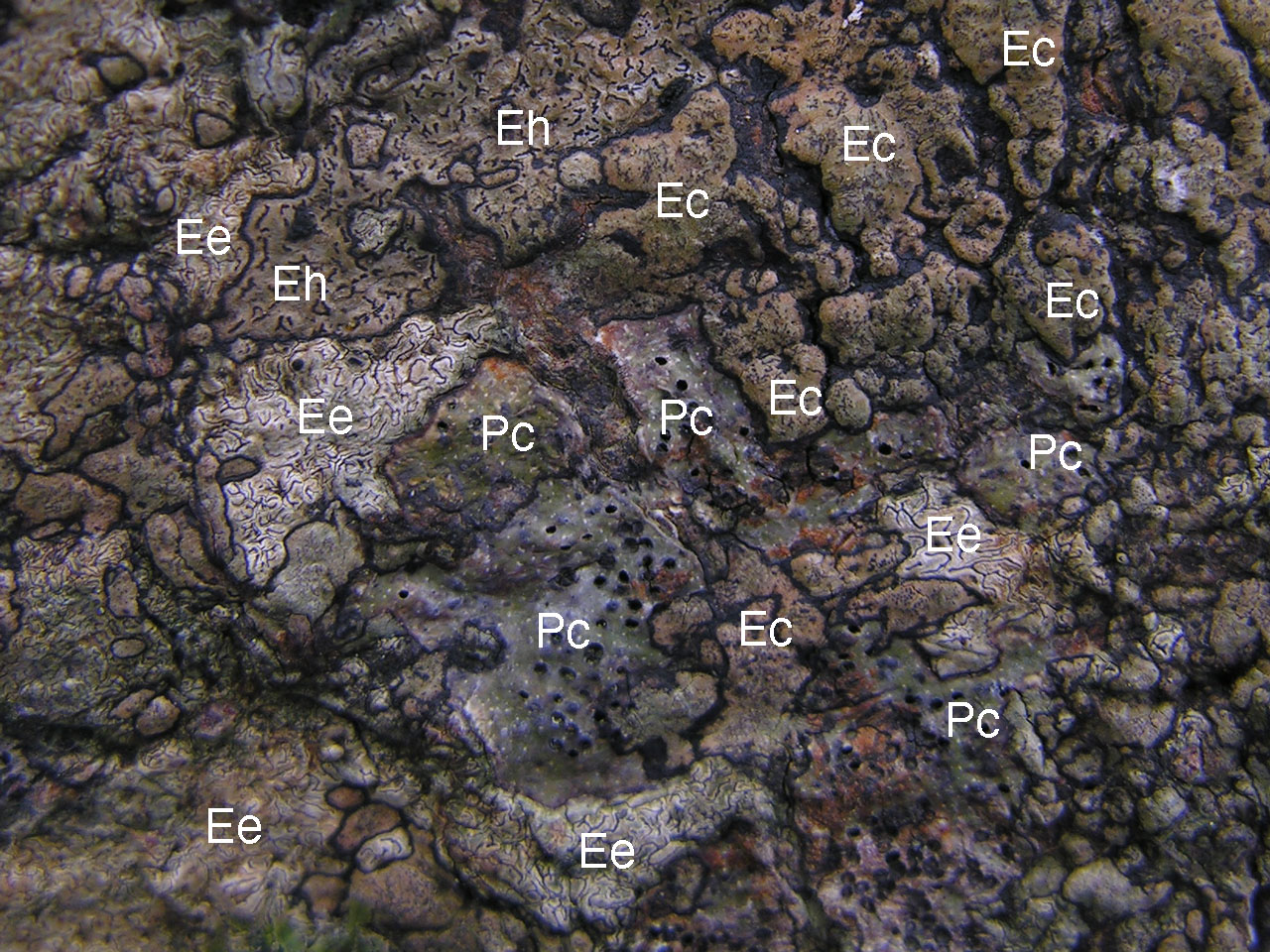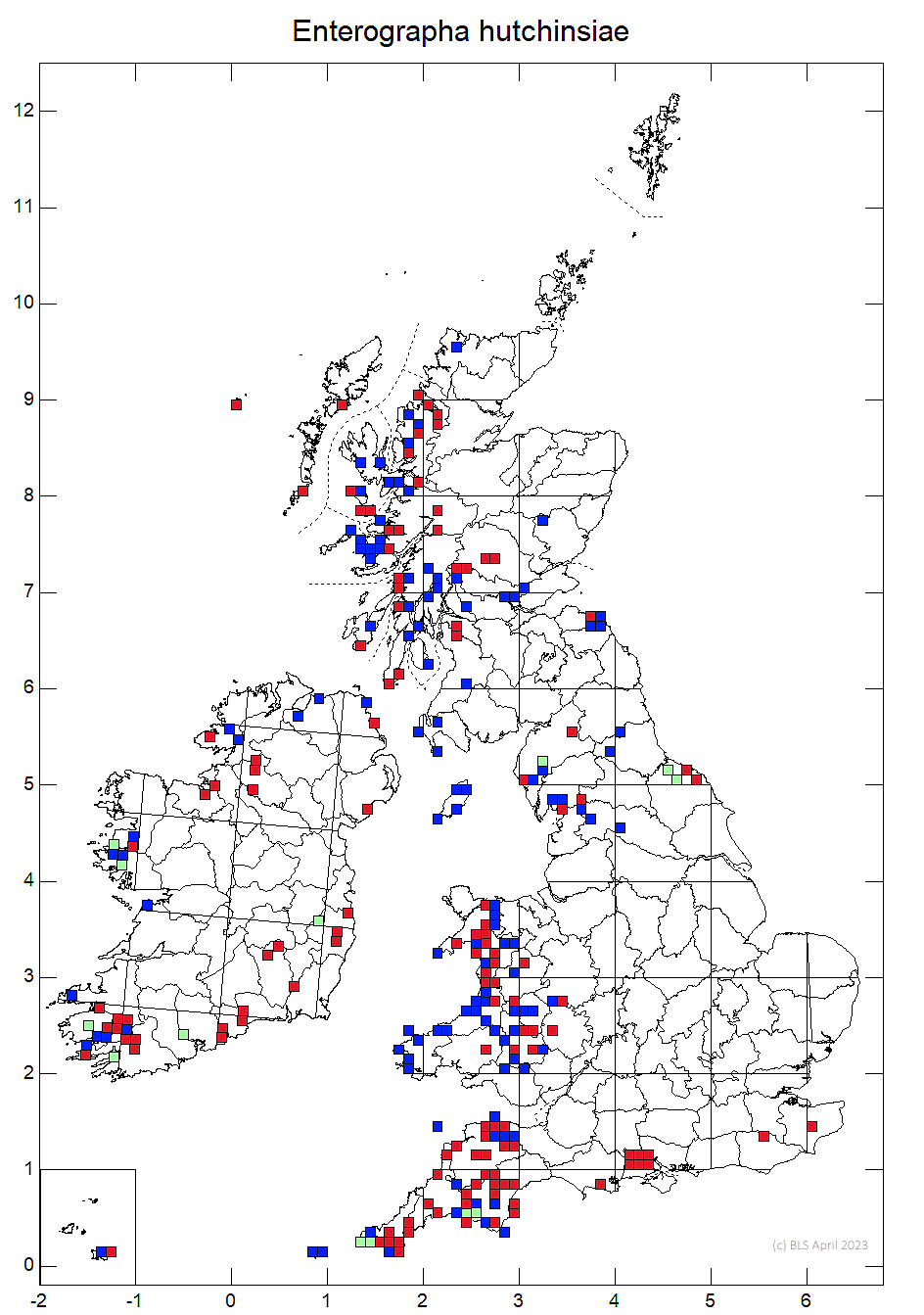Similar to E. crassa, but has larger comma-like to lirelliform, often branched apothecia, and is more typically found on damp, vertical siliceous rock face. It can occur on the smooth bark of trees such as Holly and Beech, and may have been overlooked in this habitat. Mainly upland but there are rare occurrences on veteran trees in the lowlands.
Thallus thin to moderately thick, continuous, smooth or finely rimose, even, often forming elaborate widespreading mosaics, dark grey to dull or dark olive-green or olive-brown, pallid yellow-brown in rain tracks on veteran trees, densely packed with minute crystals, K–; prothallus black, criss-crossing the thalli. Asci 8-spored. Apothecia 0.25–1 × 0.08–0.2 (–0.4) mm, immersed, comma-like to lirelliform, often branched; disc fully exposed, flat or slightly convex (when wet), black or grey-brown-black, matt, slightly raised and sometimes surrounded by a whitish rim (pseudothalline exciple); epithecium brown to black-brown, semi- opaque, non-granular, K–; paraphyses 0.8–1 μm diam. Ascospores (22–) 24–28 (–32) × 4–5 μm, 4- to 6 (-8)- septate, straight or ± curved. Pycnidia dark brown, punctiform; conidia rod-shaped, 5–6 × 1.2–1.5 μm. Thallus C–, K–, K/UV+ mauve, KC–, Pd–, UV– (confluentic acid).
More frequent in W. Scotland than E. crassa, with which it is often confused. E. crassa has smaller, often inconspicuous apothecia and occurs predominantly on bark. Possibly overlooked on old trees in the lowlands in the past as not expected in this habitat. The forms with somewhat branched lirelliform apothecia found on old trees sometimes called E. vinosa (Pers.) A. Massal. (1860) have been show to belong to E. hutchinsiae by sequencing (Ertz et al. 2009).
On shaded ± permanently damp, often vertical siliceous rock faces, especially in small, deep ravines or on shaded seepage tracks on rock faces on or near the coast; occasionally on the smooth bark of exposed tree roots and buttresses by sheltered streams; rare away from rocky habitat where found higher on the trunks of veteran trees with smooth bark, especially Beech, Holly and Hornbeam in rain tracks.

Local in W. Britain, extending to N.E. England, very rare in the lowlands on veteran trees along the south coast as far east as Hampshire, New Forest & Kent, Hatch Park. Local in upland Ireland.
Cannon, P., Aptroot, A., Coppins, B., Ertz, D., Sanderson, N., Simkin, J. & Wolseley, P. (2021). Arthoniales: Roccellaceae, including the genera Cresponea, Dendrographa, Dirina, Enterographa, Gyrographa, Lecanactis, Pseudoschismatomma, Psoronactis, Roccella, Schismatomma and Syncesia. Revisions of British and Irish Lichens 16: 1-22.
Ertz, D., Miadlikowska, J., Lutzoni, F., Dessein, S., Raspe, O., Vigneron, N., Hofstetter, V. & Diederich, P. (2009). Towards a new classification of the Arthoniales (Ascomycota) based on a three-gene phylogeny focusing on the genus Opegrapha. Mycological Research 113: 141–152.
Text by Neil A. Sanderson based on Cannon et al (2021)





